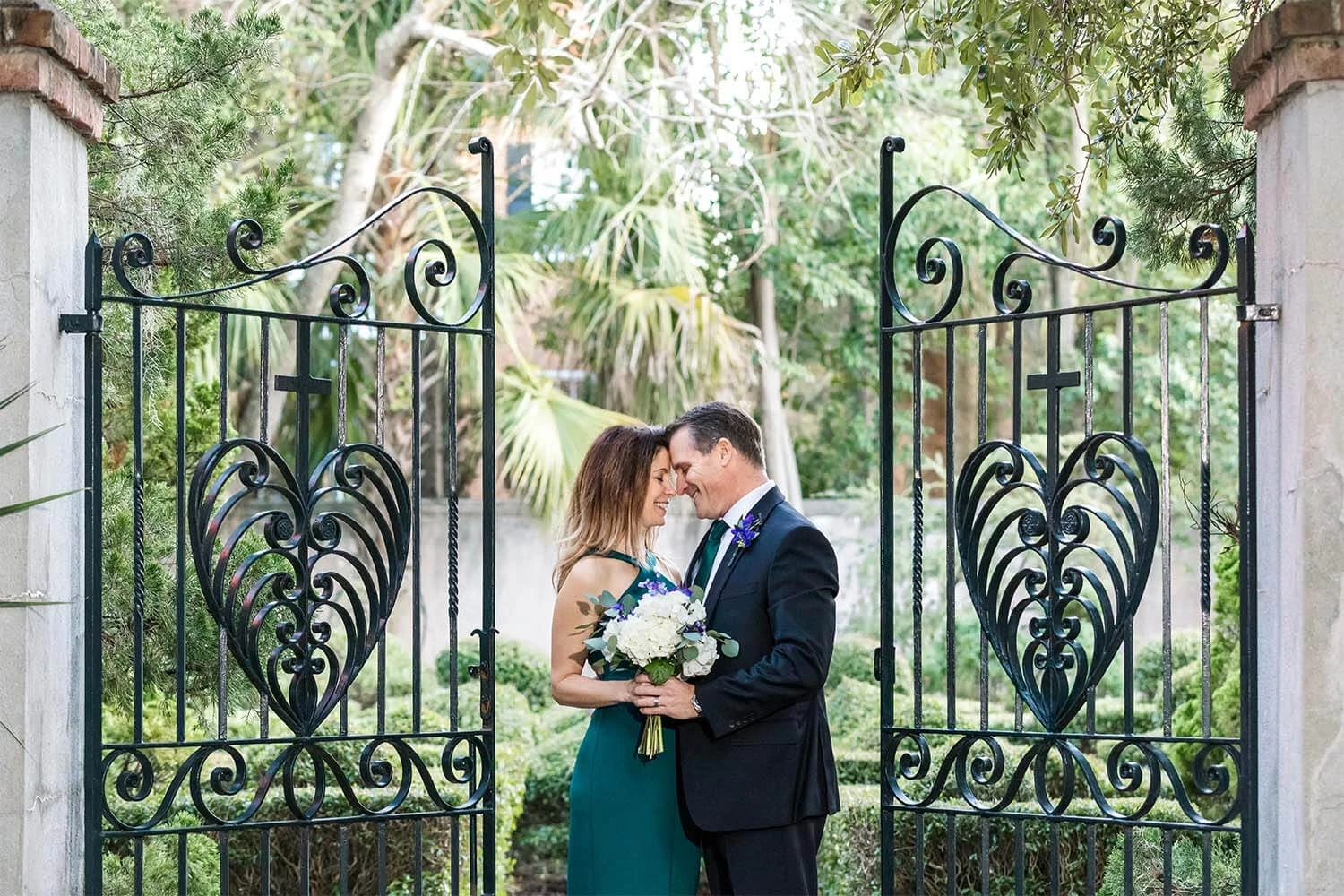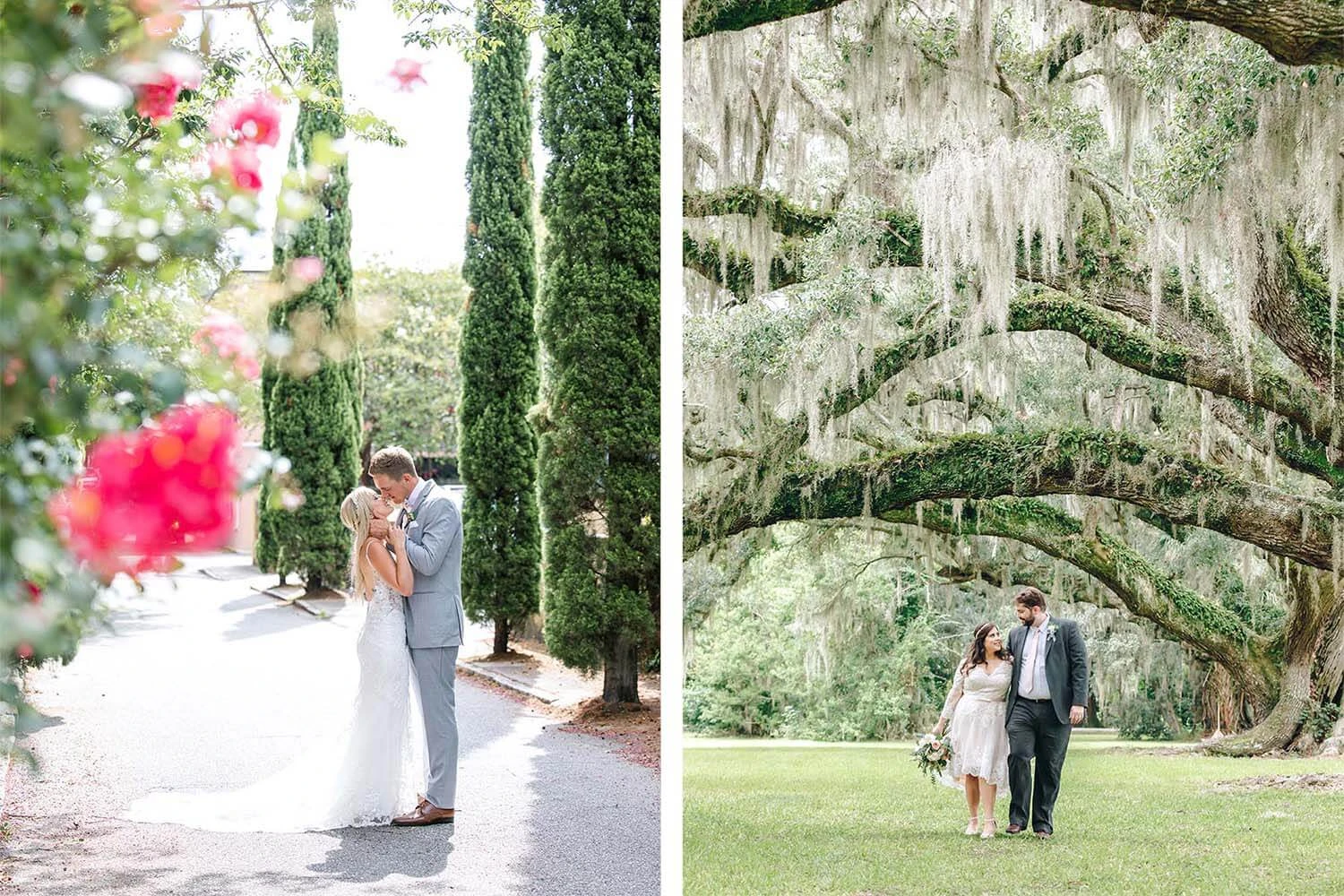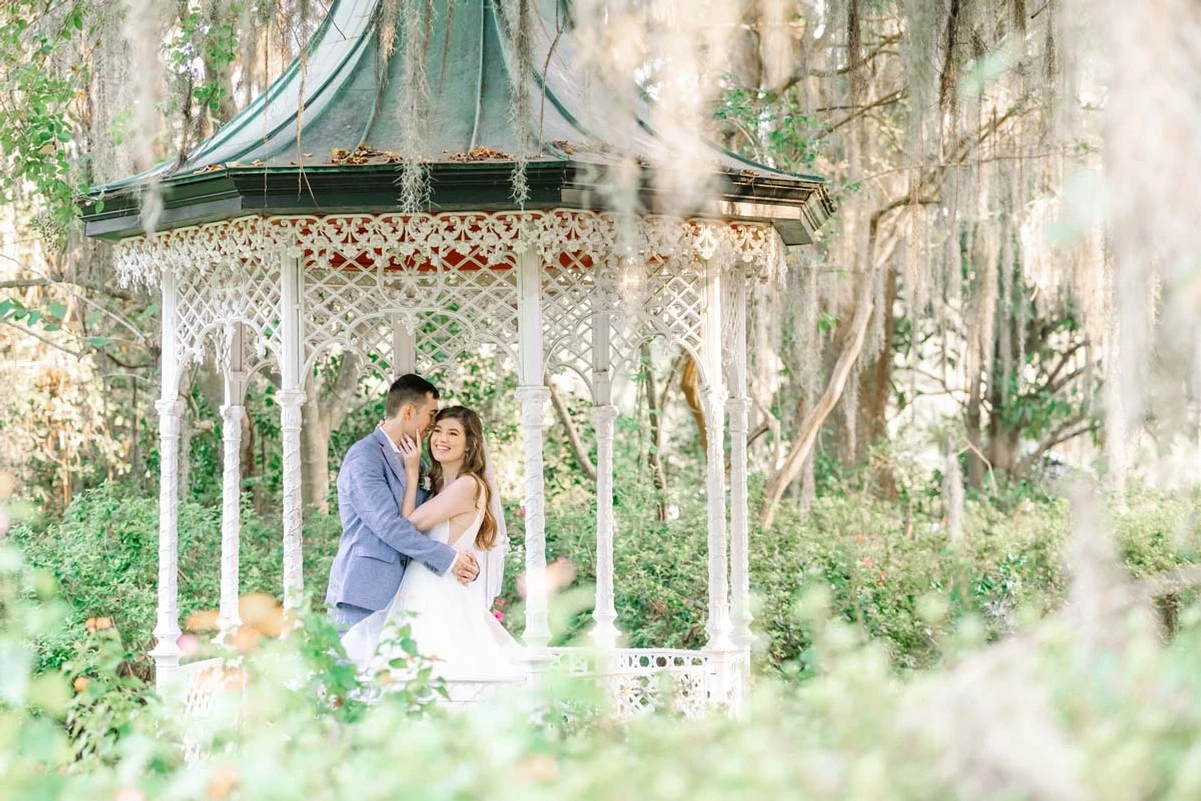Elopement Photography Guide: How to Capture Intimate Weddings Beautifully
Expert tips for capturing emotion and artistry in intimate elopements

In today's wedding landscape, "eloping" no longer means sneaking off to a courthouse in secret. Instead, it's become a powerful, intentional choice—a way for couples to celebrate their love without the noise, pressure, or expectations of a traditional wedding. Whether it's just the two of you on a windswept cliff in Iceland, exchanging vows under desert stars in Utah, or sharing a quiet "I do" in a sun-dappled forest in the Pacific Northwest, elopements are deeply personal, emotionally rich, and visually stunning.
But capturing that magic requires more than just a good camera. Elopement photography is its own unique craft—one that blends documentary storytelling, emotional intuition, and an eye for natural beauty. This elopement photography guide is for couples planning their intimate wedding and photographers looking to refine their approach. We'll explore what makes elopement photography distinct, how to choose the right photographer, which moments truly matter, and how to select a location that feels like you—all while keeping things warm, practical, and human.

Why Elopement Photography Is Different from Traditional Wedding Photography
It's easy to assume that photographing an elopement is simply "wedding photography with fewer people." But that misses the point entirely. The difference isn't just in scale—it's in soul.
Intimacy Changes Everything
Traditional weddings often unfold like carefully choreographed performances: timelines are tight, guest lists are long, and moments are scheduled down to the minute. The photographer's job can feel more like event coverage than storytelling.
Elopements, by contrast, are unscripted. There's no audience, no reception playlist, no need to herd 30 cousins for a group photo. What remains is pure, unfiltered connection. Even if you made the list of elopement photo ideas 2025, you're not performing for anyone—you're simply being together. And that changes everything for the photographer.
Instead of directing, they observe. Instead of rushing, they linger. They capture the way your partner brushes a stray hair from your face before the ceremony, or how you both laugh nervously while trying to remember your vows. These aren't posed moments—they're real life, unfolding in real time. And that authentic elopement photography is what makes the photos so powerful.
Fewer Distractions, Deeper Details
With no crowd to manage and no rigid schedule to follow, the photographer gains something rare: space. Space to notice the small things that tell your story—the handwritten note tucked into your pocket, the worn hiking boots you changed out of before the ceremony, the wildflower crown slightly askew after your first kiss.
In a traditional wedding, these details might get lost in the shuffle. In an elopement, they become the narrative. A skilled elopement photographer knows how to weave these quiet elements into a visual story that feels deeply personal—like flipping through a journal written just for you.
The Photographer as Emotional Archivist
Perhaps the biggest shift is in role. At a big wedding, a photographer might be seen as a service provider. At an elopement, they often become a trusted witness—a quiet presence who helps hold space for your emotions.
This means they're not just capturing images; they're preserving feelings. They think like poets, not just technicians. They ask: What does this moment mean? How can light, composition, and timing reflect the weight of this promise?
For example, instead of just snapping the ceremony, they might photograph the walk you take together beforehand—the way your hands find each other without thinking, the shared silence that says more than words ever could. That's not documentation. That's storytelling with heart.

Tips for Choosing the Right Elopement Photographer
Your elopement photographer isn't just someone who takes pictures. They're your guide, your calm in the storm, and the keeper of your most vulnerable moments. Knowing how to choose an elopement photographer is about more than style—it's about trust, alignment, and shared values.
Look for Genuine Elopement Experience
Not every wedding photographer thrives in intimacy. Some excel in fast-paced, high-energy environments with large groups. Others shine in quiet, slow-paced settings where emotion runs deep.
When reviewing portfolios, don't just look for weddings—look specifically for elopements. Ask:
- Have they photographed ceremonies with fewer than five people?
- Do they offer elopement-specific packages that include planning support, location scouting, or timeline guidance?
- Can they share full galleries (not just highlight reels) from real elopements?
Someone who's done this before will understand the rhythm of your day. They won't treat it like a mini-wedding. They'll treat it like the profound, once-in-a-lifetime event it is.
Natural Light Mastery Is Non-Negotiable
Most elopements happen outdoors—on beaches, in forests, on mountaintops—where studio lighting isn't an option. That means your photographer must be fluent in natural light, in all its moods.
- Can they create soft, flattering portraits at high noon?
- Do their images hold depth and warmth on overcast days?
- Can they use backlighting, shadows, and reflections creatively instead of fighting them?
Ask to see work shot in varied conditions. A true natural-light artist doesn't wait for "perfect" light—they shape the moment around whatever light exists, turning limitations into beauty. The romantic city of Charleston is a perfect place to work with natural light—see more from Charleston elopement photographers.
Choose a Portfolio That Feels Like You
Your photographer's style should resonate with your vision—not just aesthetically, but emotionally. Do their couples look relaxed and authentic? Or stiff and posed? Do the images feel like a story, or like a catalog?
Don't just scroll past pretty pictures showing modern elopement photography styles. Ask yourself: Would I want to relive this day through these images? If the answer is yes, you're on the right track.
And don't hesitate to share your own inspiration—whether it's a mood board, a song, or a memory. The right photographer won't copy someone else's work. They'll collaborate with you to create something that feels unmistakably yours.
Lastly, pay attention to how they make you feel. Do they listen? Do they ask thoughtful questions? Do they seem genuinely excited about your vision? Chemistry matters—especially when you're sharing one of the most intimate days of your life.
Essential Photo Moments to Capture During an Elopement
Even the most spontaneous elopement has emotional milestones worth preserving. These elopement photography ideas aren't rigid checklists—they're touchpoints that help anchor your story. A great photographer captures them organically, without interrupting the flow of your day.

The Quiet Before the Storm: Getting Ready
Many couples skip "getting ready" photos during elopements, assuming they're unnecessary without a bridal party. But these moments are often the most revealing.
Think about it: the nervous energy as you button your shirt. The quiet focus as your partner helps you into your dress. The shared coffee on a cabin porch as the sun rises. These aren't just pre-ceremony rituals—they're the calm before the emotional wave hits.
These images ground your story in reality. They show anticipation, care, and the transition from "us" to "us, married." Even if you're getting ready in a hotel room or Airbnb, these small, human moments deserve attention.
The First Look—Or the First "I Do"
The "first look" is one of the most emotionally charged moments of the day—whether you do it before the ceremony or during it.
Some couples choose a private first look: standing back-to-back, then turning to see each other fully dressed for the first time. Others prefer to wait until the ceremony, making that first gaze part of their vow exchange.
Either way, this is where vulnerability meets joy. A skilled photographer captures not just your expressions, but the energy between you—the catch in your breath, the way your hands find each other instinctively, the tears you didn't expect.
If you've written your own vows, consider close-ups of your hands holding the paper, your lips forming the words, your partner's eyes softening as they listen. These details transform memory into feeling.
The Ceremony—And That First Kiss
The ceremony may last only minutes, but it's the heartbeat of your elopement. Even if it's just the two of you and an officiant (or even just each other), this is the moment everything leads to.
The intimate wedding photography may include:
- Wide shots that show your surroundings (a mountain backdrop, a forest canopy, a city skyline)
- Medium shots that include symbolic elements (rings, flowers, a favorite book, your dog as ring bearer)
- Tight shots of gestures: hands clasping, rings sliding on, foreheads touching
- And then—the kiss. But don't stop there. The magic is often in what comes after: the laughter, the tears, the dazed look that says, "We actually did it." That post-ceremony glow is pure gold.
Adventure Portraits: Exploring Together
After the ceremony, many couples enjoy a short "adventure session"—a chance to wander, explore, and just be together while being photographed.
This is where elopement photography truly comes alive. Without a reception timeline, you can hike to a hidden waterfall, stroll along an empty beach, or dance in a quiet city square at dawn.
The best portraits feel effortless. You're not posing—you're living. Maybe you're whispering a joke, spinning each other in a field, or sitting in comfortable silence as the sun sets. Your photographer should guide you gently—suggesting movement or interactions—but never force you into unnatural positions.
And remember: your location isn't just scenery. It's part of your story. Let your photographer use it creatively—silhouettes at sunset, reflections in puddles, shadows on stone walls—to add layers of meaning and mood.
Best Locations for Elopement Photography
One of the greatest freedoms of eloping is choosing a place that truly reflects who you are. Your location should feel authentic, meaningful, and visually compelling—not just photogenic, but yours.
Classic Backdrops with Emotional Weight
Mountains offer grandeur, solitude, and a sense of timelessness. Think alpine lakes in Colorado, volcanic peaks in New Zealand, or misty ridges in the Smoky Mountains. Mountain elopements suit couples who crave adventure, stillness, or a sense of awe.
Beaches bring softness, rhythm, and romance. Whether it's black sand in Hawaii, turquoise waves in the Maldives, or rugged cliffs in Big Sur, beaches create dreamy, fluid imagery—especially during golden hour. Just be prepared for wind, tides, and the occasional curious seagull!
Historic cities blend culture, texture, and charm. Imagine exchanging vows in a hidden garden in Seville, on a bridge in Florence, or beneath the arches of an old library in Savannah. Urban elopements offer geometry, history, and endless visual interest—cobblestones, wrought-iron balconies, vintage streetlights. That's why they're often included in lists of the best places to elope in 2025.
Pick a Place That Feels Like Home—Even If It's Far Away
The best elopement locations aren't the most famous—they're the most meaningful. Ask yourselves:
- Where did you first say "I love you"?
- What place makes you feel most like yourselves?
- Is there a dream destination you've always wanted to visit—together?
Some of the most iconic elopement backdrops include Paris, the Rockies, and charming Southern cities such as Charleston — a favorite among couples seeking timeless photographs.
Don't chase small wedding photography trends. A rainy alley in your hometown can be more powerful than a postcard-perfect landmark—if it holds your story.
Also, consider logistics:
- Do you need permits? (Many national parks do.)
- Is the location accessible in your chosen season?
- Will weather cooperate? (Spoiler: it might not—and that's okay!)
Many photographers offer destination elopement photography and specialize in specific regions and know secret spots that avoid crowds. Don't be afraid to lean on their expertise—they've likely been there, done that, and know where the light hits just right at 5:30 p.m. in October.
Ultimately, your location should amplify your love—not overshadow it. When the setting feels true to you, the photos will too.
Final Thoughts
An elopement isn't a "lesser" wedding. It's a bold, beautiful declaration that your love doesn't need an audience to matter. It's a choice to prioritize presence over performance, connection over convention, and meaning over spectacle.
And the photographs from that day? They're not just keepsakes. They're time machines. Decades from now, they'll transport you back to the smell of pine needles, the sound of waves, the exact way your partner looked at you when you said "always."
That's why your photographer matters so much. You're not hiring a vendor. You're inviting someone into your inner circle—someone who will witness your rawest, most joyful self and translate it into images that last generations.
Think of this as an investment—not in aesthetics, but in legacy. You're not just paying for photos. You're paying to preserve a feeling, a promise, a moment that can never be repeated.
So take your time. Look beyond the surface. Meet with photographers. Ask about their philosophy, their process, their favorite elopement memory. Choose someone who sees you—not just your outfits, but your love.
Because your story deserves to be told with honesty, warmth, and artistry. And with the right photographer beside you, it will be—quietly, beautifully, and forever.